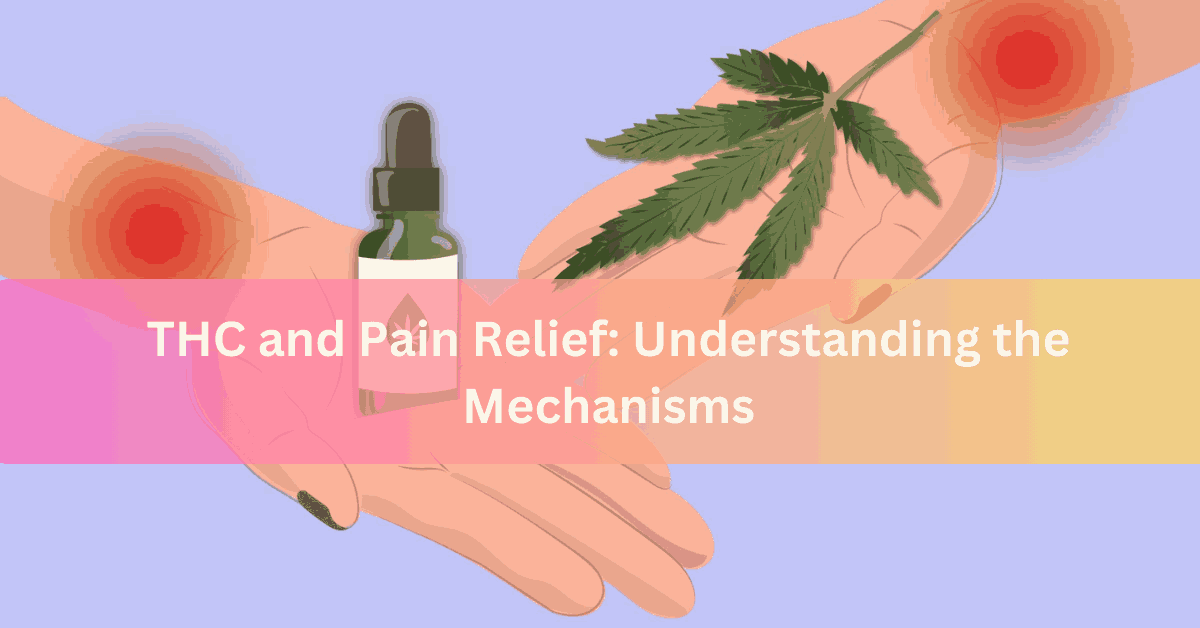THC and Pain Relief: Understanding the Mechanisms
In the realm of natural pain management, one compound has consistently piqued the interest of both the medical community and those suffering from chronic pain: Tetrahydrocannabinol, commonly known as THC.
This psychoactive component of cannabis has long been associated with its ability to alleviate pain, but what lies beneath this anecdotal evidence? This exploration delves into the mechanisms by which the best THC gummies act as a pain reliever, shedding light on its potential as a therapeutic agent.
The Science Behind THC’s Pain-Relieving Properties
At the heart of THC’s effectiveness in pain management is its interaction with the body’s endocannabinoid system (ECS). The ECS plays a crucial role in regulating a variety of physiological processes, including pain sensation.
THC mimics the activity of endocannabinoids, naturally occurring compounds in the body, by binding to cannabinoid receptors, primarily CB1 receptors located in the brain and nervous system. This binding action can modulate pain perception and bring relief.
THC: A Multifaceted Approach to Pain
THC’s ability to alleviate pain goes beyond just its interaction with cannabinoid receptors. It also involves:
- Anti-inflammatory Action: Inflammation is a significant contributor to pain, especially in conditions like arthritis. THC has demonstrated anti-inflammatory properties, thereby addressing pain at one of its root sources.
- Muscle Relaxation: THC has been noted to aid in muscle relaxation, which can be particularly beneficial in conditions like multiple sclerosis and fibromyalgia, where muscle stiffness and spasms contribute to pain.
- Neuroprotective Effects: Chronic pain can result from nerve damage. THC’s neuroprotective properties may help in mitigating neuropathic pain, a challenging type to treat.
THC vs. Traditional Pain Medications
One of the compelling arguments for using THC in pain management is its safety profile compared to traditional pain medications, like opioids. Opioids, while effective, come with a high risk of addiction and other severe side effects.
THC, on the other hand, presents a lower risk of dependency and typically fewer adverse effects, making it a safer alternative for long-term use in managing chronic pain.
The Role of THC in Holistic Pain Management
Pain is not just a physical sensation; it has emotional and psychological dimensions. THC’s psychoactive effects can play a role in the holistic management of pain.
By inducing a sense of relaxation and well-being, THC can help alleviate the emotional and mental stress often associated with chronic pain, offering a more comprehensive approach to pain management.
Navigating the Challenges
While the potential of THC in pain relief is significant, it’s crucial to navigate its use carefully. The psychoactive effects of THC can vary greatly among individuals, and finding the right dosage is key to maximizing its pain-relieving properties while minimizing any unwanted side effects. Moreover, the legal status of THC varies globally, making accessibility a challenge in many regions.
Conclusion
The journey of understanding THC’s role in pain relief is ongoing. With increasing research and a growing body of anecdotal evidence, THC is emerging as a promising tool in the battle against chronic pain.
Its multifaceted approach to pain relief, coupled with a favorable safety profile, positions it as a valuable component in the future of pain management strategies. As our understanding deepens, so does the potential to harness THC’s full therapeutic potential, offering new hope to those in the grip of chronic pain.





